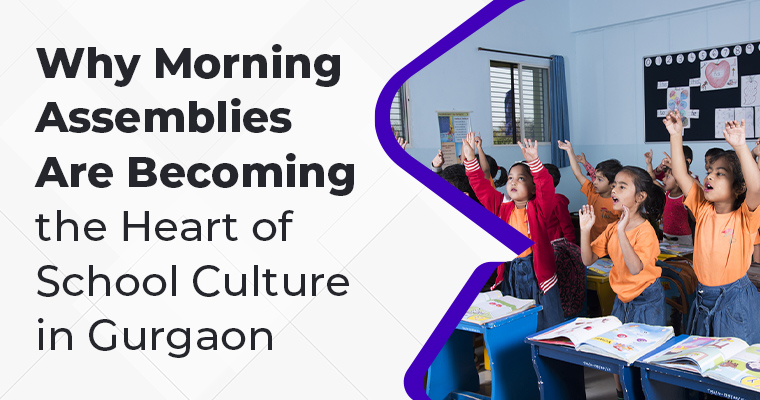
From lightning-speed evolving technology to a world that today’s students are entering with artificial intelligence (AI) and automation changing the face of industry. As parents, we all want our children to be prepared for the future, one that is based on innovation and digital transformation. But how do we make sure they don’t just react to these changes but drive them? The response is in building future-ready skills, using AI and technology-enabled learning.
The Home / EdTech / The Changing Face of Education
Traditional rote learning is on its way out. This is where technology plays a role in equipping the future problem solvers, critical thinkers, and innovators to utilize its power to address the needs of the future. Which is why schools now are incorporating AI-powered classrooms, coding, and robotics into curricula to help children develop analytical and computational skills at an early age.
With digital innovation happening at a pace unprecedented in human history, students must be educated in both technical and soft skills. This is about developing critical thinking, creativity, and collaboration skills as well as digital literacy for all facets of student development. While digital transformation in schools used to be a way to introduce smart boards into the classroom or leverage online learning platforms, their current focus has shifted to how schools can truly revolutionise education and prepare students for careers that don’t yet exist.
Why Does AI and Technology in Education Matter?
The AI-transformation of education is not a trend, it is a necessity. Smart learning platforms tailor the lessons to individual students and assist them in understanding complex concepts at their own pace. For example, VR (virtual reality) and AR (augmented reality) are making subjects like science and history more dynamic than ever, while AI-powered tools provide immediate feedback so teachers can arrange how to best teach each individual.
Additionally, the rise of automation means that future jobs will demand a keen understanding of technology. In this way, students begin to have exposure to coding and robotics in schools, giving them an early start in learning how they can understand machine workings and harness their power to solve real-world problems. Robotics projects expose students to programming, but even more importantly, they provide hands-on experience with the kinds of problem-solving skills that will serve them well in the workforce.
Preparing Students for Tech Careers
These skills will be required for the future workforce, especially those related to STEM (Science, Technology, Engineering and Mathematics). The STEM education benefits are not just in learning technical skills – these subjects also promote creativity, logical reasoning, and teamwork. Technology-driven learning atmosphere in schools exposes students to hands-on experience with real-life applications such as developing software, coding robots, etc.
Furthermore, when students are introduced to the ideas of AI in education and machine learning in the early stages, they get an edge over other students. Careers related to artificial intelligence, data science, cybersecurity and automation are taking off, and students who are exposed to such fields in school will be much better equipped to pursue them professionally.
Fostering Creativity and Innovation
Technology is an important tool but there is no substitute for creativity. Careers of the future won’t only require coding knowledge; they’ll demand creative thinking and unique solutions. Projects on AI and automation encourage students to experiment, fail, learn, and innovate – future skills for students that are going to set them apart when they enter the job market.
This is where project-based learning comes in handy to develop those skills. Real-world problems in the classroom need real solutions from AI and technology to be interesting; therefore, students learn more and better. For instance, schools could offer AI-powered problem-solving challenges where students build chatbots, create predictive models or automate tasks to make daily life easier. Such experiences help foster resilience, adaptability, and critical thinking, all key strengths in an ever-evolving professional environment.
Building Digital Responsibility
With great technology comes a great responsibility. As schools undergo digital transformation, it is essential to prepare students for topics such as ethical AI use, cybersecurity and data privacy. Grasping how technology shapes society enables them to become conscientious digital citizens leveraging innovation for good.
Fostering digital ethics is a crucial part of this endeavor. In the face of disinformation campaigns and fake news, students need to know how to distinguish between legitimate and misleading information, how to protect their personal information online, and how to navigate ethical issues raised by AI like algorithmic bias and the responsible use of automation. This education deeply happens in schools.
Conclusion
At Gitanjali International School in Gurgaon, we understand the need of preparing students for a tech-advanced world. In our curriculum we infuse AI, robotics & the STEM education to empower our young minds to excel and succeed in the ever changing scenario. We believe in developing future leaders, not just future academics, who can use technology for the greater good.
The future is now, and schools must meet the challenge of preparing students for futures that haven’t even been created yet. Today by adopting AI and technology-based learning, we are preparing the innovators, problem-solvers and change-makers of tomorrow.







